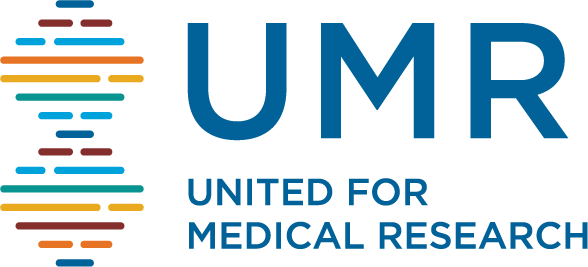September 7, 2010
United for Medical Research (UMR), a coalition of leading research institutions, patient and health advocates and private industry companies, today released a letter to the Office of Management and Budget urging that biomedical funding for the National Institutes of Health (NIH) reflect, at a minimum, an adjustment for biomedical research inflation in FY2012.
UMR recognizes that the economy is in crisis and is sensitive to the arguments about government spending. However, biomedical research employs 350,000 jobs in the United States – jobs ranging from CEO to researcher to janitor. The economic benefits of biomedical research aren’t limited to one specific area or educational degree.
Most importantly, discoveries that an NIH researcher or NIH-funded researcher makes today lead to treatments and cures for patients tomorrow.
The text of the letter follows:
September 7, 2010
Mr. Jeffrey Zients
Acting Director
Office of Management and Budget
725 17th Street, NW
Washington, DC 20503
Dear Mr. Zients:
United for Medical Research, a coalition of leading research institutions, patient and health advocates, and private industry, thanks you for your continued significant investments in the National Institutes of Health (NIH). We urge you to maintain your commitment to biomedical research in the FY12 budget request, and ask that funding for this premier agency be increased to reflect, at a minimum, an adjustment for biomedical research inflation.
The greatest contribution NIH makes is to the health and well-being of Americans. Past federal investments in medical research, combined with those from the private sector, have led to improved health, better quality of life, and improved productivity for millions of patients and their families.
But NIH also serves as the backbone of the nation’s life sciences enterprise—directly supporting 350,000 jobs across the U.S, and indirectly driving 6 million more. The U.S. has been a global leader in biomedical development over the last 30 years, in important part because of our sustained public investment in medical research.[1],[2]
Several recent studies have shown that NIH-funded research is inextricably linked to biomedical industry developments and achievements. One study found that 31 percent of new products in the biomedical field could not have been developed, without substantial delay, in the absence of federally-funded academic research.[3]A recent Science Coalition report highlights that 100 new companies were created thanks to federally funded research projects. These companies bring innovation in many different fields, from nanotechnology to robotics to medical imaging to DNA sequencing.[4]The California Healthcare Institute found that one in six of the public biotech companies in the country were founded by a University of California scientist, where NIH
investments account for three quarters of the university’s biomedical research funding.[5]The Council on American Medical Innovation (CAMI) concluded that sustained public investment in medical research is one of the five pillars of U.S. global biomedical leadership.[6]
The NIH–supported life science sector has been a strong source of US job growth. Compared to other industries, the biomedical industry has not only shown faster employment growth but also consistently higher wages, exceeding the national average private-sector wage by more than $24,000. And even as our faltering economy has been struggling to stabilize, jobs in the biomedical sector are being added at a pace faster than the overall private sector.[7]
As a nation we also face new biomedical research opportunities and challenges. As the CAMI report notes, “Biomedical science has become more complex and demanding, requiring more involved technology development efforts, including more complex clinical trials.” The report also clearly highlights, “early stage financing and private investment for R&D are harder to access because of the changing risks and rewards in advancing medical innovation.”
NIH Director, Dr. Francis Collins eloquently showcases the need for sustained funding, saying, “Science cannot operate in a vacuum, especially at this critical juncture in the nation’s history. The monumental effort to overhaul the US health system will require the knowledge and dedication of many constituencies, including NIH-funded biomedical researchers.”
We recognize this constrained fiscal environment requires tough choices and the Administration has requested that each agency submit a discretionary request five percent below the President’s FY11 budget request. We applaud the Administration’s efforts to streamline program management, eliminate low-priority, low-performance projects and ensure flexibility to provide additional resources for our nation’s priorities.
NIH investments lead to improved health and quality of life while spurring innovation, US economic growth, and job creation. And today, we face new research challenges and opportunities that require resources. For these reasons, we respectfully urge your support for additional funding for NIH at a minimum to reflect an adjustment for biomedical research inflation in FY12.
We sincerely hope you give strong consideration to this modest investment that will yield rewarding dividends for our economy and our health care system. Please contact Jennifer Poulakidas, Chair of United for Medical Research’s Government Relations Subcommittee, atjpoulakidas@aplu.org or at (202) 478-6053 for any further information regarding this request.
Sincerely,
United for Medical Research
[1]Iain M. Cockburn and Scott Stern (2010) “Finding the Endless Frontier: Lessons from the Life
Sciences Innovation System for Technology Policy,” Capitalism and Society: Vol. 5: Iss. 1, Article 1.
[2]Battelle Technology Partnership Practice (2010) “Gone Tomorrow? A Call to Promote Medical Innovation, Create Jobs and Find Cures in America” Council for American Medical Innovationhttp://www.americanmedicalinnovation.org/sites/default/files/Gone_Tomorrow.pdf
[3]IBID.
[4]The Science Coalition (2010) “Sparking Economic Growth: How federally funded university research creates innovation, new companies and jobs”http://www.sciencecoalition.org/successstories/resources/pdf/Sparking%20Economic%20Growth%20Full%20Report%20FINAL%204-5-10.pdf
[5]California Healthcare Institute and PricewaterhouseCoopers Pharmaceutical and Life Sciences Industry Practice (2008) “The National Institutes of Health (NIH) Supplement to the 2008 California Biomedical Industry Report” www.chi.org
[6]Battelle Technology Partnership Practice (2010) “Gone Tomorrow? A Call to Promote Medical Innovation, Create Jobs and Find Cures in America” Council for American Medical Innovationhttp://www.americanmedicalinnovation.org/sites/default/files/Gone_Tomorrow.pdf
[7]Engle, C. (2009, September 21). What Do Biotechnology Companies Look For When Deciding to Locate?PowerPoint lecture presented to the California Select Committee on Biotechnology.
